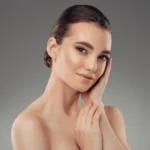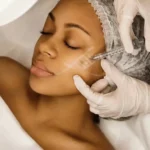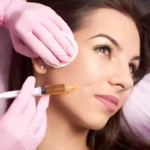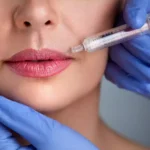

Each year, more and more soft tissue fillers are making it to market to cater for the ever-increasing demand. The sheer number of dermal fillers and their wide variety of applications can sometimes make it challenging to select the most appropriate dermal filler for the job at hand. With this in mind, this article will compare and contrast two popular dermal fillers: Fortelis vs Juvederm.To begin with, let’s take a closer look at each of the fillers discussed here individually.
Fortelis Extra: Developed in 2007, Fortelis Extra was produced after the successful release of its related products, Esthelis Soft and Basic. While Fortelis Extra is made using the same technology as its predecessors, its high hyaluronic acid concentration and high degree of cross-linkage makes it best suited for the correction of deep wrinkles, such as nasolabial folds. Fortelis Extra has special properties that enables it to optimally fill furrows and folds, which is aided by its ability to maintain excellent tissue integration. This also helps make Fortelis Extra a filler that creates predictable, natural looking-results. Treatment with Fortelis Extra is associated with a minimal risk of local inflammatory reactions compared to other dermal filler treatments. It produces results that can last for up to 12 months.
Comparisons between Fortelis Extra with other fillers n ote overall better results with the use of Fortelis Extra. For instance, in a study found that Fortelis Extra gave better results when compared to Restylane Lyft in terms of reducing wrinkle severity in nasolabial folds and that a higher number of patients were satisfied with the treatment and would repeat the treatment course. In fact, 80% of patients treated with Fortelis Extra felt this way, while only 65% of subjects who received Restylane Lyft treatment felt the same with their treatment.
Juvederm: Ever since their first dermal filler was approved in 2007, Juvederm has expanded their portfolio to include a wide variety of products that can be used in a multitude of aesthetic applications, ranging from correcting minor lines and wrinkles to providing substantial volumization. Of the products in this range, comparable fillers to Fortelis Extra include Juvederm Vollure and JUVÉDERM® ULTRA PLUS XC. Both Juvederm Vollure and Ultra Plus XC can be used for filling severe skin depressions; however, Juvederm Vollure causes less swelling and typically lasts longer than Juvederm Ultra Plus. Both products are classified as monophasic, monodensified fillers, which mean that they have a uniform gel density. Products made using both Hylacross and Vycross Technology have the best of both worlds: they are soft and malleable, so as to produce natural results, yet elastic enough to provide the lift and support needed to effectively correct the aesthetic defect(s).
Similarities and Differences between Fortelis Extra and JUVÉDERM® ULTRA PLUS XC and Vollure
Fortelis Extra is primarily used for lip enhancement and to fill and lift severe lines and folds. JUVÉDERM® ULTRA PLUS XC and Juvederm Vollure have similar indications as well.
While monodensified fillers like Juvederm are cross-linked once, polydensified fillers are cross-linked continuously, resulting in a gel with non-uniform cross-linking and lower viscosity than other fillers. Studies that investigated the rheological properties of hyaluronic gel fillers demonstrate that fillers made with CPM Technology, such as Fortelis, are completely cohesive (they do not break under pressure) and integrate fully with epidermal tissue. These features of Fortelis Extra allow for more heterogeneous distribution of material when compared with products prepared using Vycross Technology. This uniform integration of filler in skin also has the added benefit of reducing the occurrence of the Tyndall effect, a complication that can occur with some fillers where particles in the filler scatters light in its path, causing a bluish discoloration. The Tyndall effect is apparent when a filler is placed too superficially, as happens frequently in the treatment of the under-eye area. For this reason, a filler, like Fortelis Extra, that does not cause this complication is particularly useful for treating areas that are predisposed to producing this effect.
Fortelis and Juvederm treatments also differ in other aspects, such as the cost of treatment and longevity. In general, Fortelis does not last as long as Juvederm Vollure, as Fortelis treatments can generally last up to a year, while Juvederm Vollure is able to last up to 18 months. However, Fortelis is cheaper in cost.
Conclusion
As a dermal filler that is produced with unique CPM Technology, Fortelis Extra possesses several physical characteristics that provide added benefits in dermal filler treatment, including a softer look, lowered likelihoods of complications like swelling and Tyndall effect occurrences, and cheaper cost. However, Juvederm Vollure outperforms Fortelis in terms of longevity. These factors should inform the decision-making process when selecting the right product for the patient.
Aesthetic products generally refer to a broad category of items designed to enhance or improve one's appearance, often focusing on skincare, beauty, and personal grooming. These products are typically used to maintain or enhance physical attractiveness and may include a wide range of items intended for both professional and personal use. Here are some common types of aesthetic products:
-
Skincare Products: Including cleansers, moisturizers, serums, and treatments designed to address various skin concerns such as acne, aging, hyperpigmentation, and sensitivity.
-
Cosmetics: Makeup products such as foundations, concealers, eyeliners, lipsticks, and eyeshadows used to enhance facial features and achieve desired looks.
-
Hair Care Products: Shampoos, conditioners, styling products, and treatments to maintain and improve the health and appearance of hair.
-
Fragrances: Perfumes and colognes used to enhance personal scent and attractiveness.
-
Dental Care Products: Toothpaste, mouthwash, whitening treatments, and dental floss aimed at maintaining oral hygiene and enhancing smile aesthetics.
-
Personal Grooming Tools: Including razors, electric shavers, trimmers, and grooming kits used for hair removal and personal hygiene.
-
Beauty Devices: Devices such as facial cleansing brushes, LED light therapy masks, and microcurrent devices designed for at-home skincare treatments.
-
Nutritional Supplements: Supplements aimed at promoting skin health, hair growth, and overall well-being, often containing vitamins, minerals, and antioxidants.




